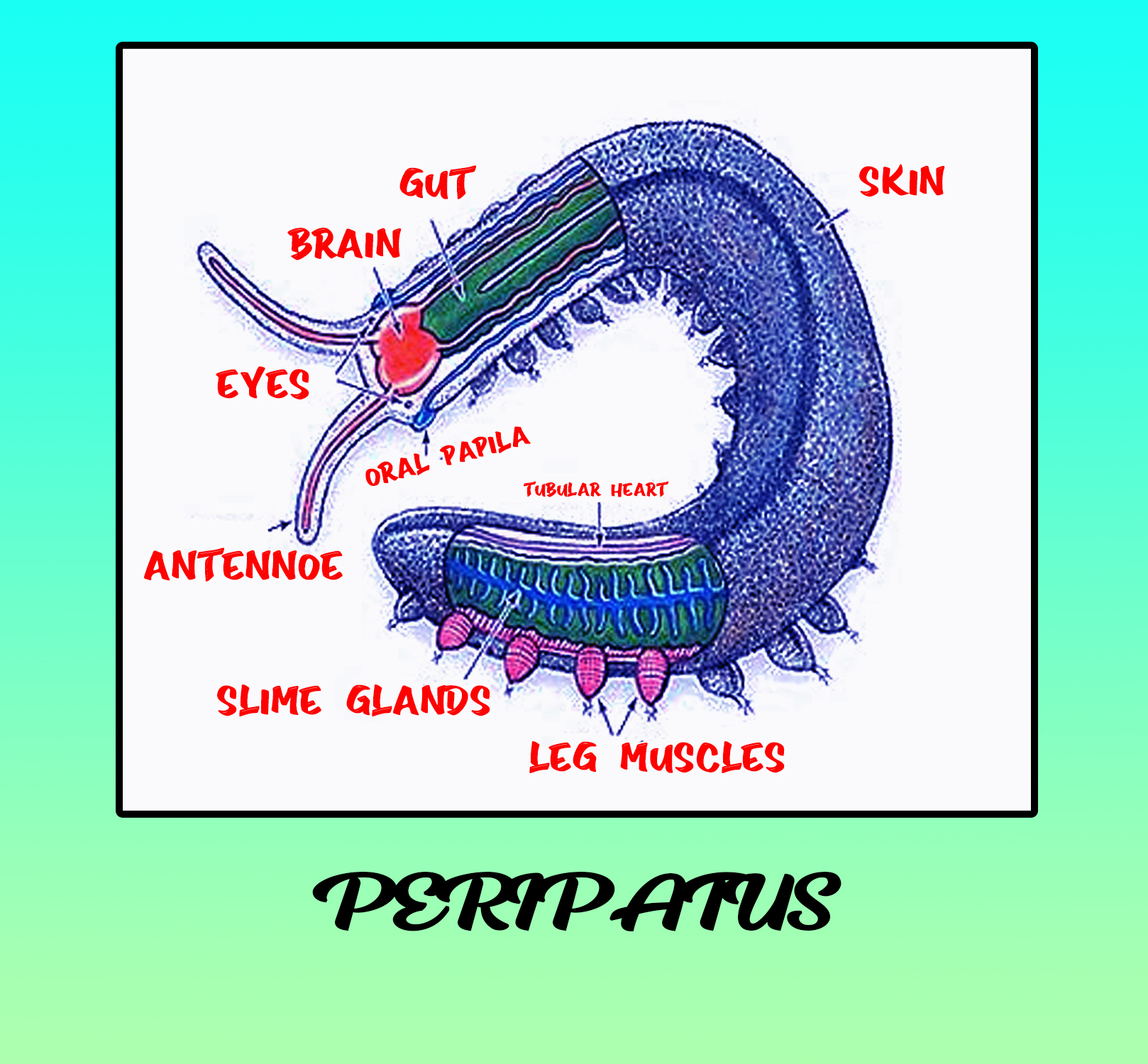
Peripatus is a connecting link between Annelida and Arthropoda. In addition, the other character of zoological importance in this animal is
(a)Habitat
(b)Living fossil
(c)Jointed legs
(d)Distribution
Answer
464.7k+ views
Hint: For any living species of the organism which appears to be the same as a species otherwise only known from fossils and which has no immediate living relatives, the living fossil is an informal term. All these species have survived large events of extinction and typically maintain low taxonomic diversity.
Complete answer:
Living animals with certain characters from two separate animal classes are referred to as the connecting connection. Peripatus is a primitive arthropod that, like other arthropods, joins paired legs, compound eyes, and tracheas but also displays certain characteristics of Annelida, such as segmented worm-like body, non-chitinous cuticle, and segmental nephridia. It forms a connection between Annelida and Arthropoda and is considered to be a living fossil that regards the animal as being of zoological significance.
In the Peripatidae family, Peripatus is a genus of velvet worms. To refer to the Onychophora as a whole the term "peripatus" is also used, although this group includes several other genera besides Peripatus. In Central America, the Caribbean, and northern South America, the genus Peripatus is present.
Additional Information: Peripatus, since it and other onychophorans are transitional between Arthropoda and Annelida and retain a significant number of archaic features, is also considered a living fossil. While Peripatus was originally described as a leg-bearing slug, at the end of its stubby appendages, it looks more like a caterpillar or a soft-bodied centipede with claws.
So, the correct answer is ‘living fossil’.
Note:Peripatus is a terrestrial species found living under bark, stones, logs, and under fallen leaves and other dark and damp areas, or along stream banks, in moist places, in crevices of rocks. In general, it is restricted to humid environments. It is nocturnal and predatory in nature and carnivorous in the habit of feeding. Most species of Peripatus, such as snails, insects, and worms, are predatory and feed on small invertebrates. A variety of species have a specific preference for termites.

Complete answer:
Living animals with certain characters from two separate animal classes are referred to as the connecting connection. Peripatus is a primitive arthropod that, like other arthropods, joins paired legs, compound eyes, and tracheas but also displays certain characteristics of Annelida, such as segmented worm-like body, non-chitinous cuticle, and segmental nephridia. It forms a connection between Annelida and Arthropoda and is considered to be a living fossil that regards the animal as being of zoological significance.
In the Peripatidae family, Peripatus is a genus of velvet worms. To refer to the Onychophora as a whole the term "peripatus" is also used, although this group includes several other genera besides Peripatus. In Central America, the Caribbean, and northern South America, the genus Peripatus is present.
Additional Information: Peripatus, since it and other onychophorans are transitional between Arthropoda and Annelida and retain a significant number of archaic features, is also considered a living fossil. While Peripatus was originally described as a leg-bearing slug, at the end of its stubby appendages, it looks more like a caterpillar or a soft-bodied centipede with claws.
So, the correct answer is ‘living fossil’.
Note:Peripatus is a terrestrial species found living under bark, stones, logs, and under fallen leaves and other dark and damp areas, or along stream banks, in moist places, in crevices of rocks. In general, it is restricted to humid environments. It is nocturnal and predatory in nature and carnivorous in the habit of feeding. Most species of Peripatus, such as snails, insects, and worms, are predatory and feed on small invertebrates. A variety of species have a specific preference for termites.

Recently Updated Pages
The correct geometry and hybridization for XeF4 are class 11 chemistry CBSE

Water softening by Clarks process uses ACalcium bicarbonate class 11 chemistry CBSE

With reference to graphite and diamond which of the class 11 chemistry CBSE

A certain household has consumed 250 units of energy class 11 physics CBSE

The lightest metal known is A beryllium B lithium C class 11 chemistry CBSE

What is the formula mass of the iodine molecule class 11 chemistry CBSE

Trending doubts
State the laws of reflection of light

Arrange Water ethanol and phenol in increasing order class 11 chemistry CBSE

One Metric ton is equal to kg A 10000 B 1000 C 100 class 11 physics CBSE

Difference Between Prokaryotic Cells and Eukaryotic Cells

A mixture of o nitrophenol and p nitrophenol can be class 11 chemistry CBSE

How do I convert ms to kmh Give an example class 11 physics CBSE




